This post contains affiliate links to products and or services. I may receive a small commission for purchases made through these links, but with no additional costs to you.
If you’re planning on travelling to Portugal, you’ll more than likely visit the busting capital city of Lisbon and perhaps take a day trip out to Sintra.
While both are beautiful and vibrant in cultural significance, why not venture out to the Alentejo region?
This Alentejo region beauty boasts picturesque landscapes, a rich history and the city centre is considered a UNESCO World Heritage Site. Medieval walls, Roman remains, charming little streets and breathtaking views are all found here. The peaceful atmosphere offers travelers a much needed break from the hustle and bustle of Lisbon.
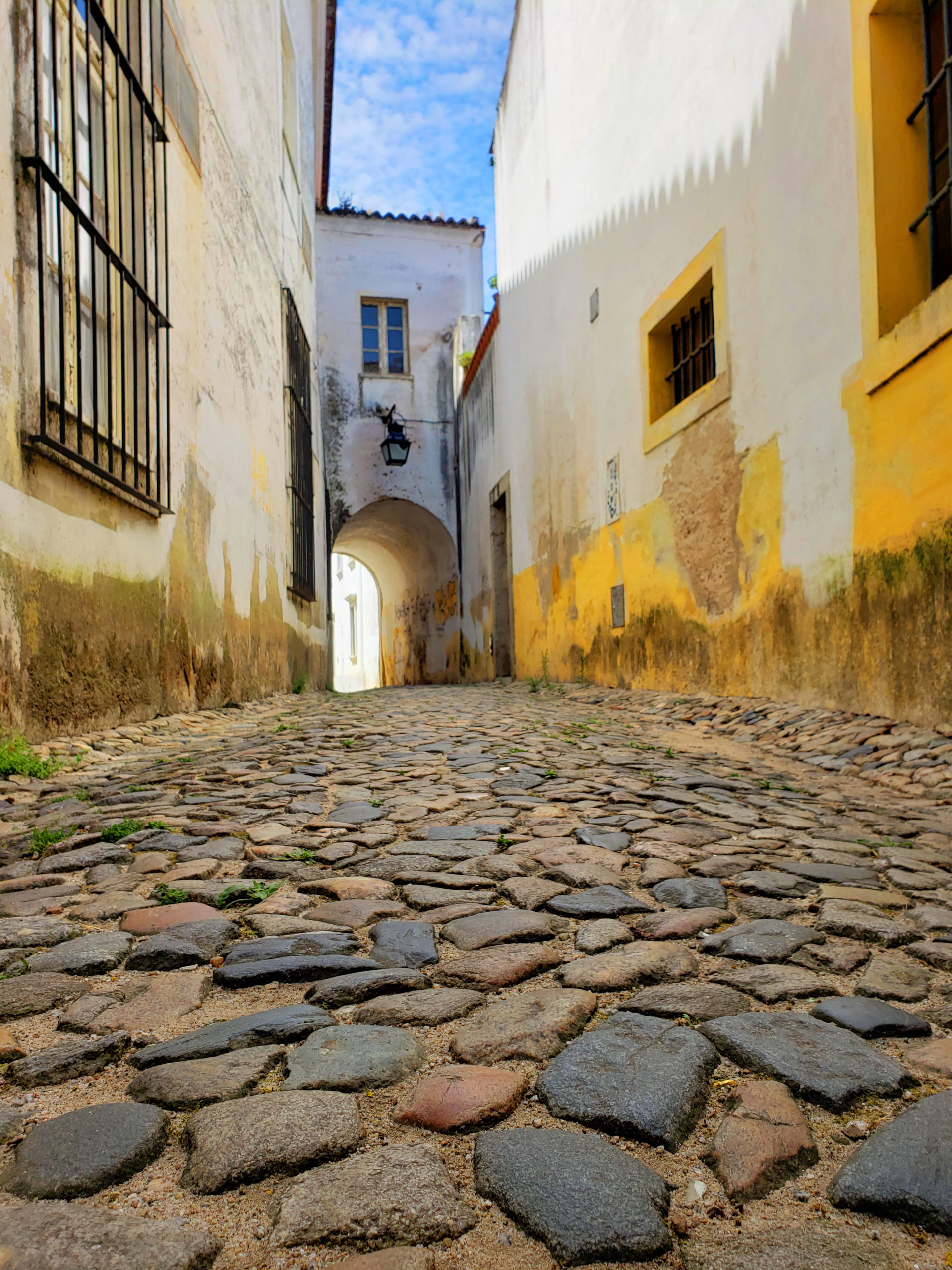

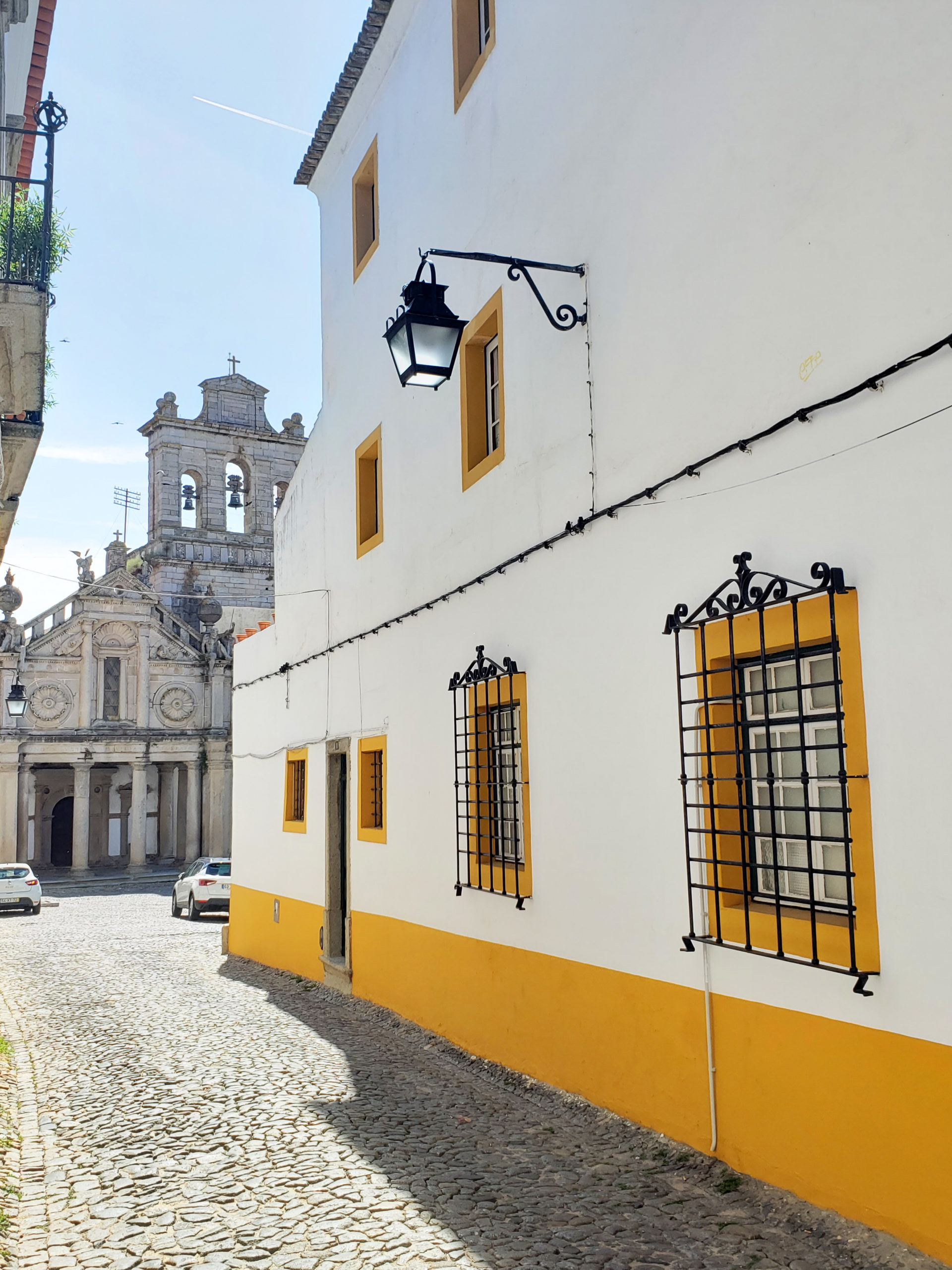
Like hot weather? This city is known to be the hottest city in Portugal. The Alentejo region is particularly dry, hot and have summer days filled with sunshine. I was there during late May and the weather was quite perfect. Warm, sunny and inviting.
If this sounds like the perfect day trip from Lisbon to you, look no further…Welcome to the enchanting city of Évora.

Read more: A Complete City Guide To Lisbon, Portugal
How To Get To Évora
Getting to Évora is super easy and quite fast… as long as there are no train strikes happening. 😉 You can get there by car, train, or by bus if you’re on a budget. There are hourly departures from Entrecampos, Oriente or Sete Rios stations. Fares range from $10 to $50 depending on the type of train you are taking, as well as the class of car you choose as your ticket. I departed from the Santa Apolónia Station in Lisbon and had a connection at Oriente Station both coming and going. The connection time was short going to Évora, but Oriente Station is very easy to use and I still had plenty of time to switch tracks without rushing. You guys know that I am a train nerd, so I’ll always take the train journey over any other mode of transit if I have a choice. The views are beautiful and the train trip was smooth and easy.

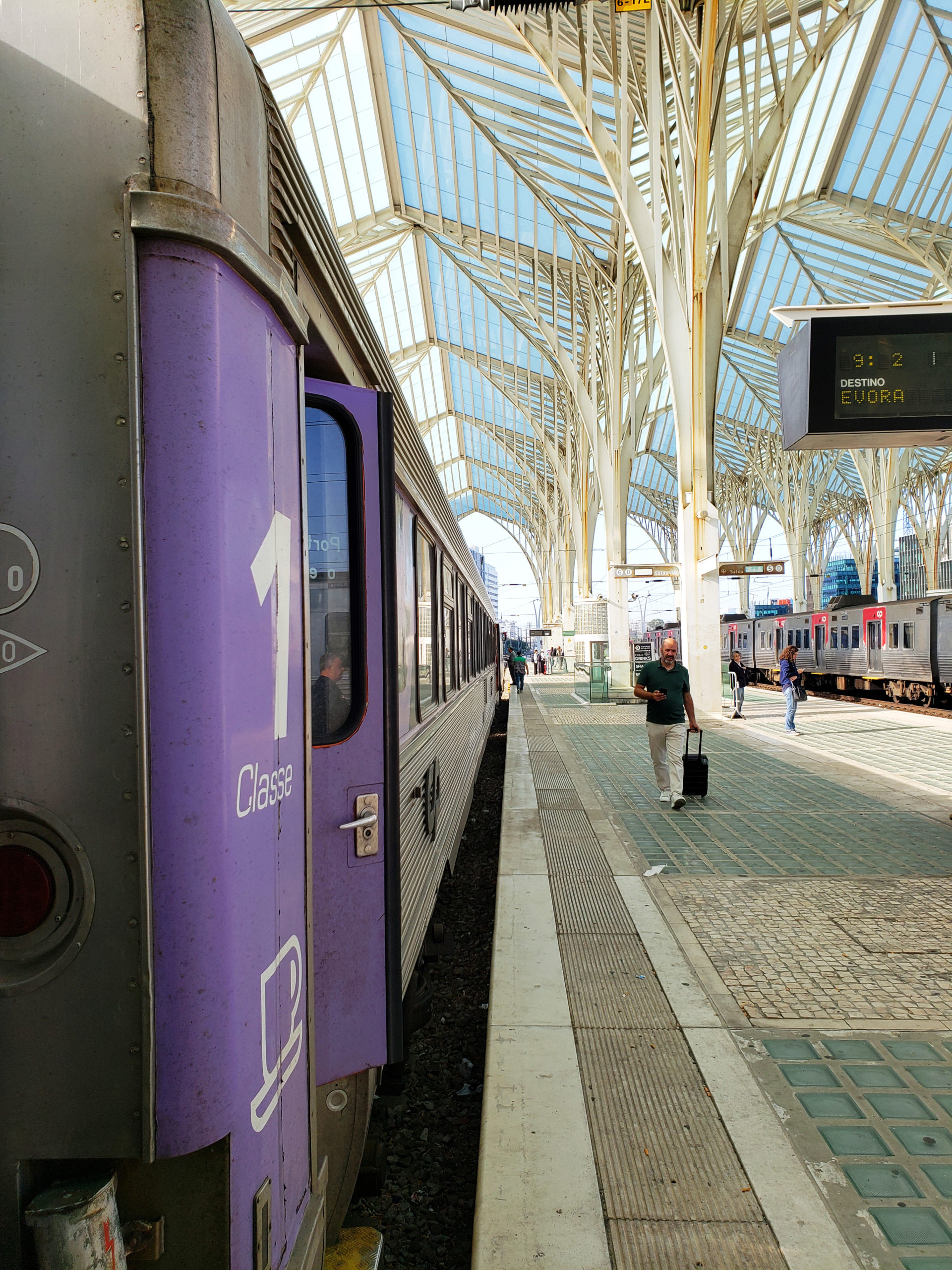

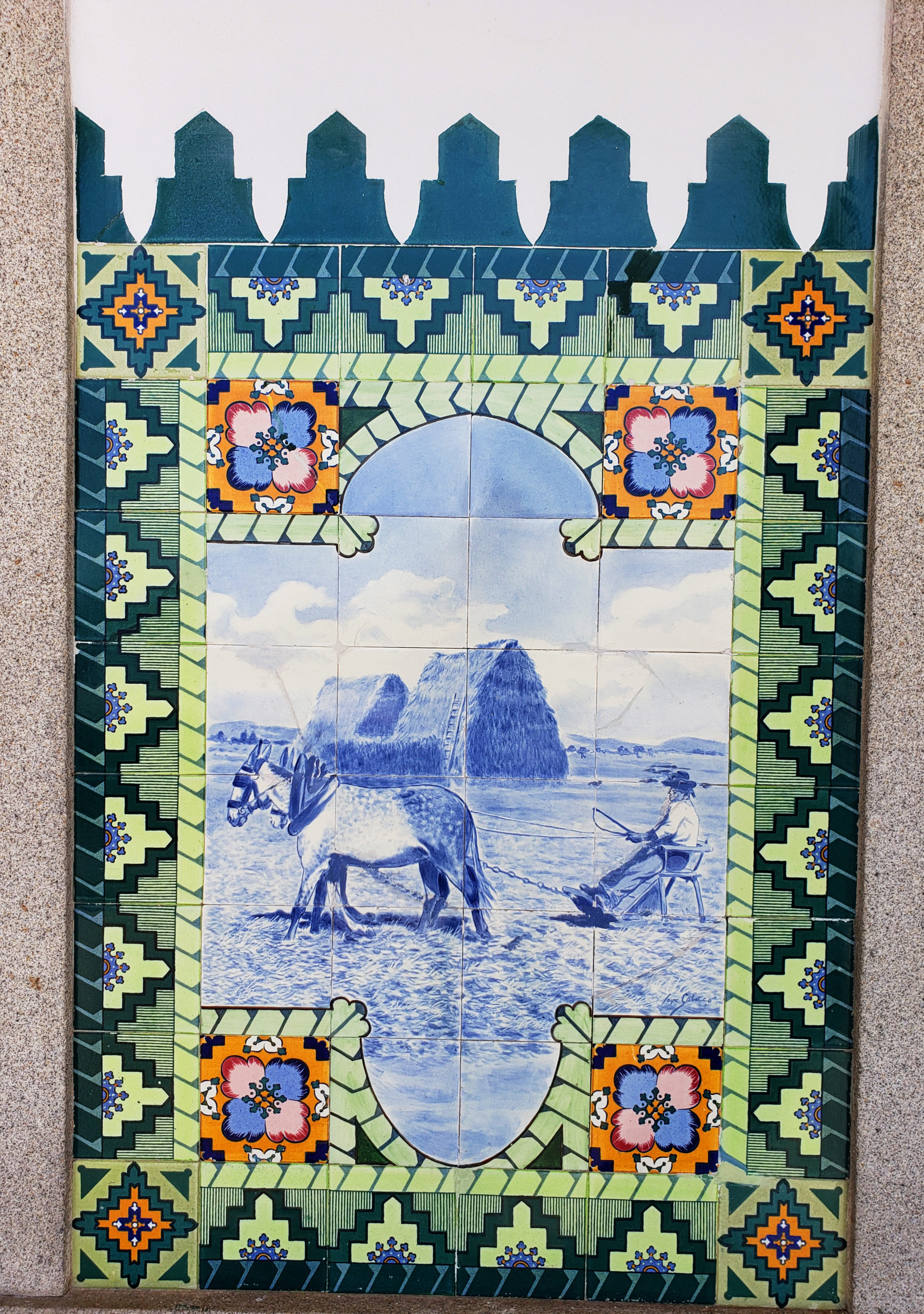
Getting Around Évora
Upon arriving at the Évora train station, you’ll need to walk about 15 – 20 minutes into the city centre. All points of interest are within a 10 minute walk of each other, which makes getting around on foot the optimal choice for navigating the tiny alleyways and streets. A leisurely stroll will also give you the chance to soak up the atmosphere of this stunning city. The beautiful white and yellow maze-like streets will lead you to open squares, churches and sleepy little areas where doors are decorated with the most gorgeous flowers. One of my favourite photos taken in Évora, was simply found by chance.
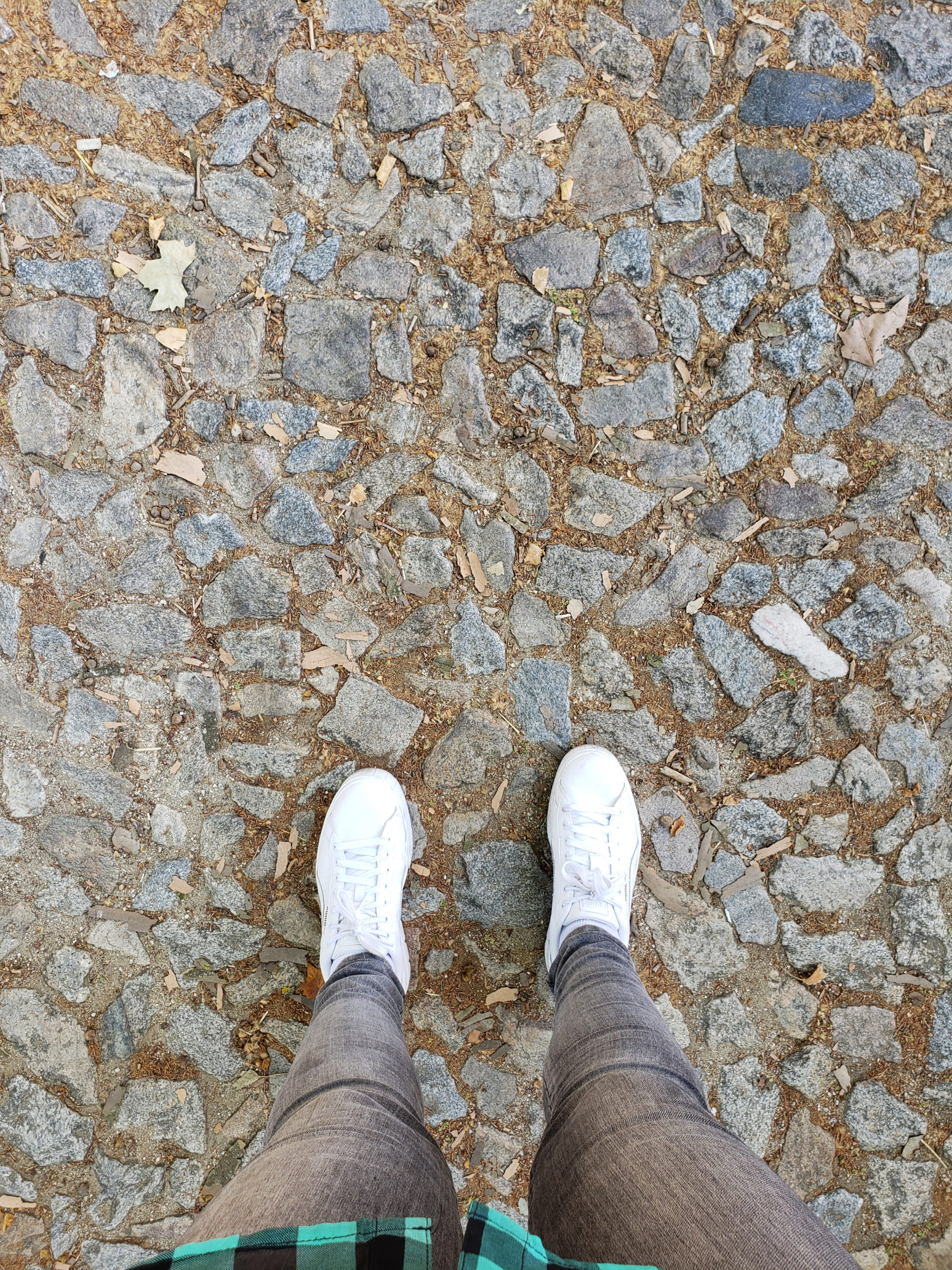


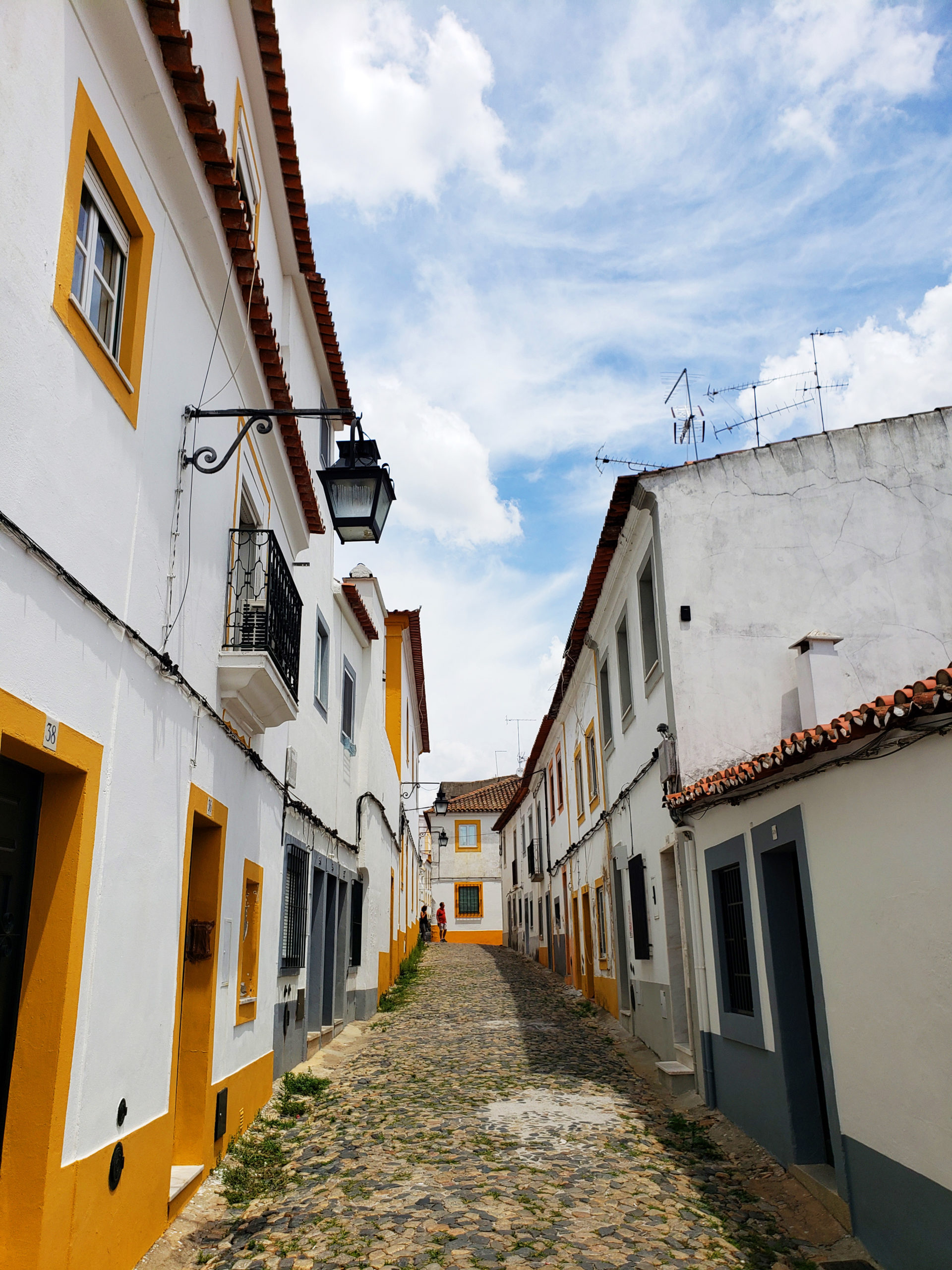
Capela dos Ossos (Chapel of the Bones)
To be honest, what drew me to visit Évora (and most people as well), was the creepy yet intriguing Chapel of Bones, or Capela dos Ossos. The inscription at the entrance to the chapel sets the tone for what you are about to witness: “We, the bones that are here, wait for yours.” Unsettling yet fascinating, this peculiar place attached to the Church of São Francisco was built in the 16th century. During that time, a plague epidemic hit Portugal and the cemeteries were overcrowded, as dozens of people were dying. The Franciscan monks of Évora exhumed bodies to sort out the “clutter.” Nice way of putting it, huh? Then they offered them a new eternal resting place within the walls of their monastery. Lined with the skulls and bones of more than 5,000 skeletons, this is quite a site to see. There are also two mummies enclosed in glass, which legend says are a father and son, but a scientific investigation was done in 2019 and concluded that they’re actually a woman and a girl. The woman apparently died between the age of 30 and 50, while the little girl was just 2 or 3 years old. Tickets to the Chapel of Bones are €5.00 and include admission to the church’s museum, which I highly recommend visiting as well.

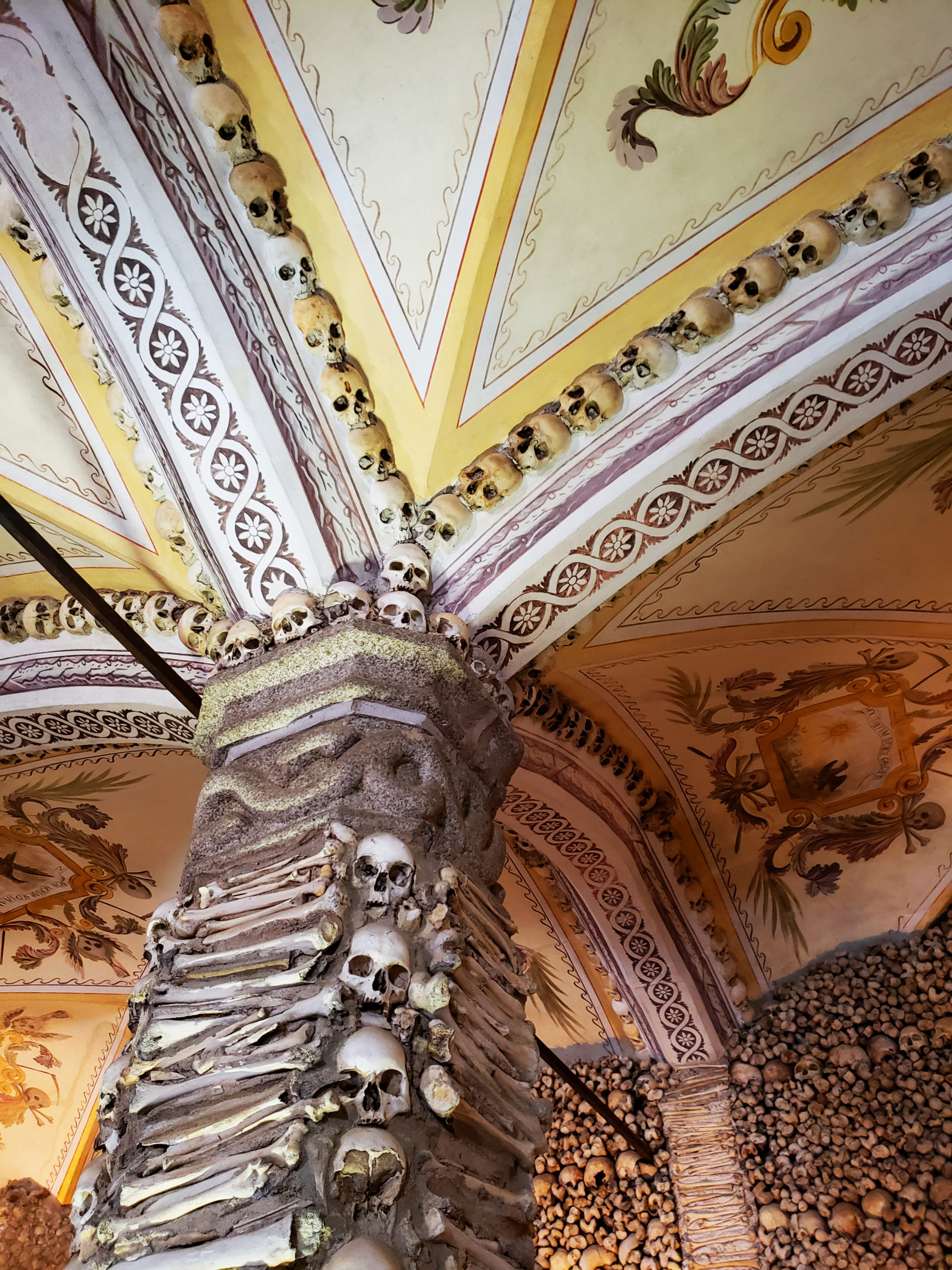


Templo de Diana
For a minute, you may think you’ve been teleported to Greece. Standing tall in the heart of the city, the grandiose Temple of Diana, or Templo de Diana, is from Ancient Rome and dates as far back as the 1st century AD. Dedicated to the goddess of the hunt and the moon, this beautiful temple was once a place of worship when Évora was part of the Roman colony. The temple’s function then shifted with the rise and fall of several empires over many years and was even used as a slaughter house.

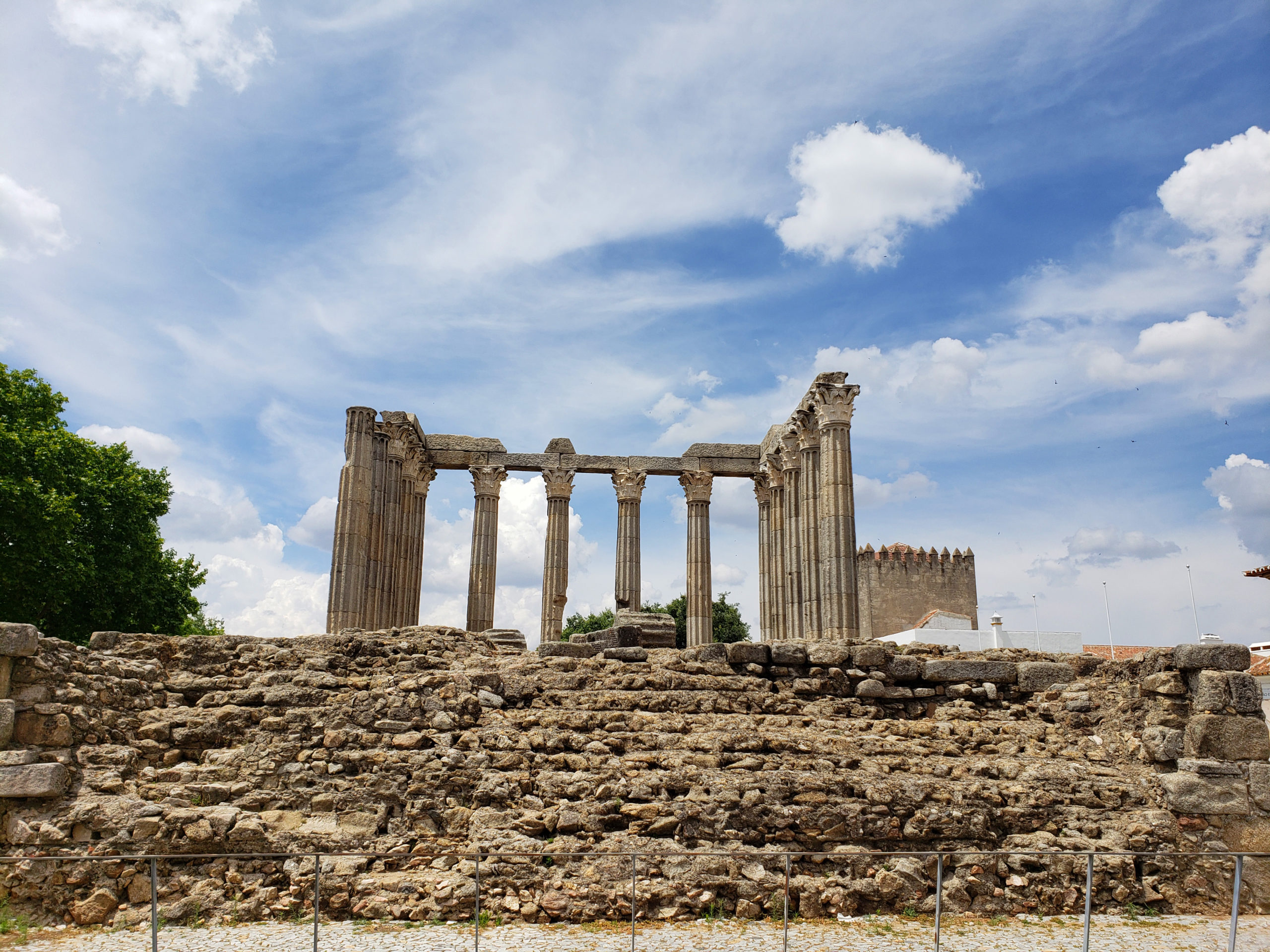

Read more: How To Spend 72 Hours In Porto, Portugal
Jardim Diana
Adjacent to the Templo de Diana, you’ll find a peaceful garden space, which provides an absolutely incredible view of the surrounding area. Feast your gaze upon white washed houses and buildings with orange terracotta tiled rooftops as far as the eye can see. Make sure to grab a beer at the park’s kiosk, sit back, relax and take it all in.
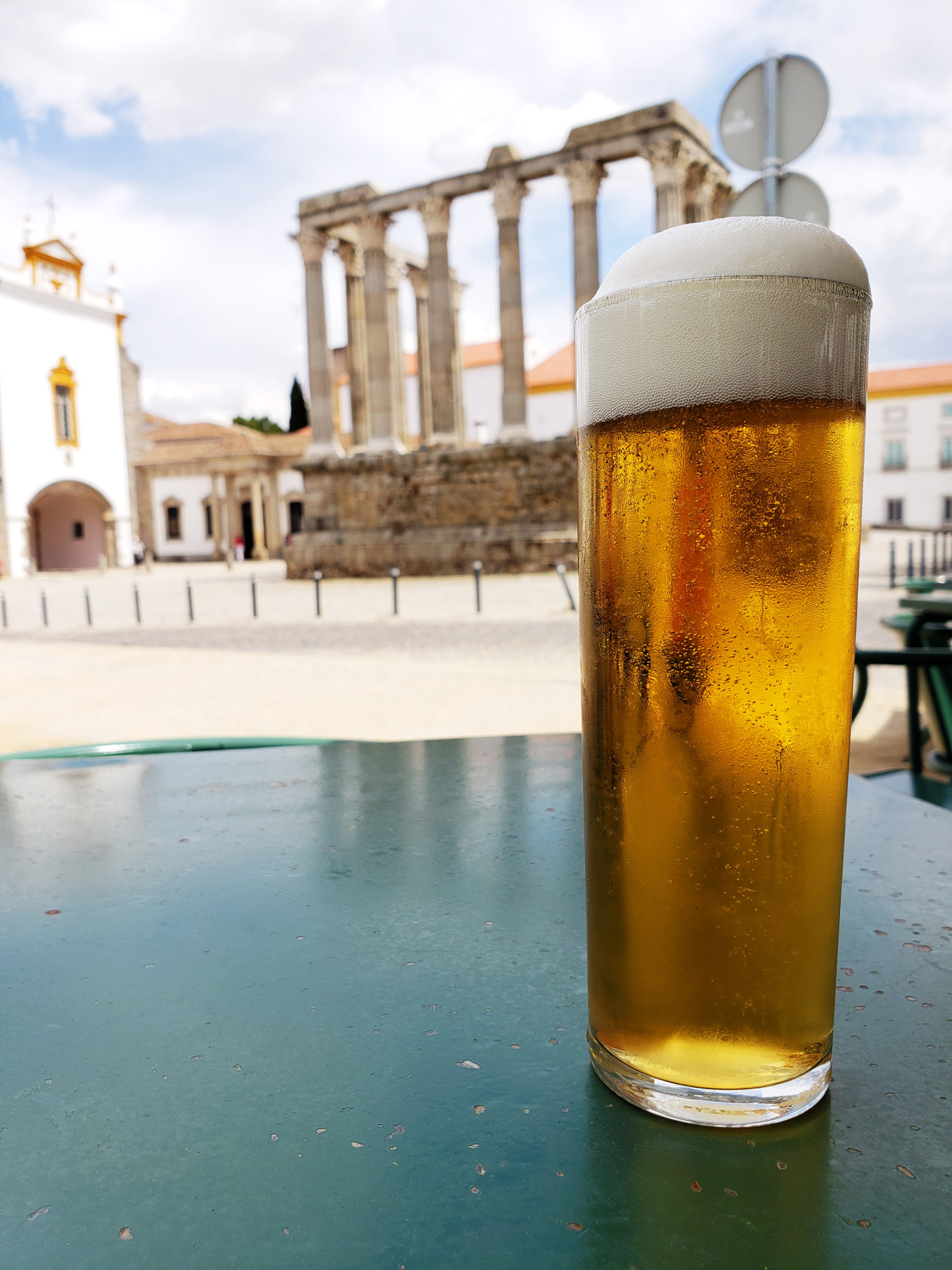

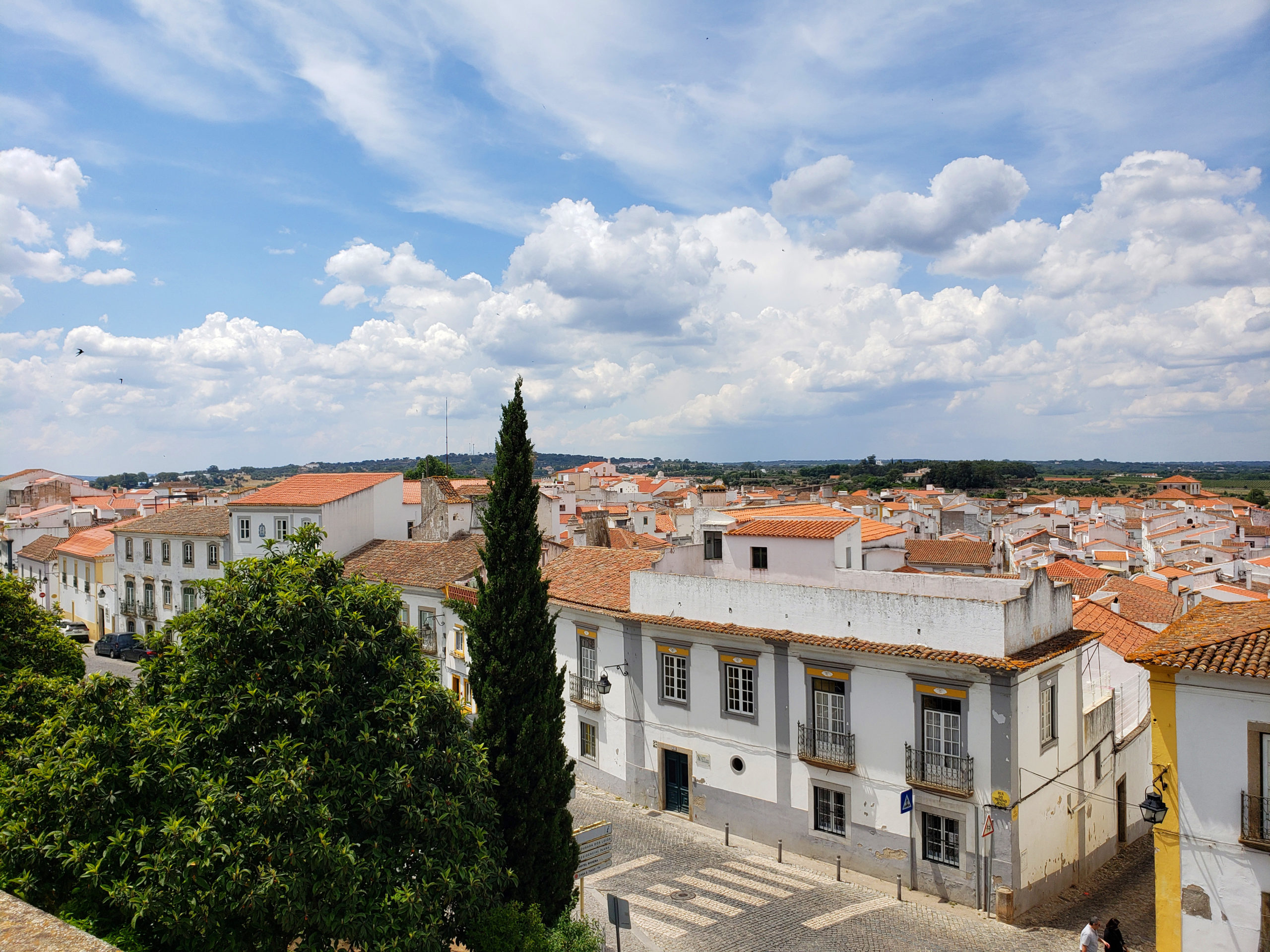
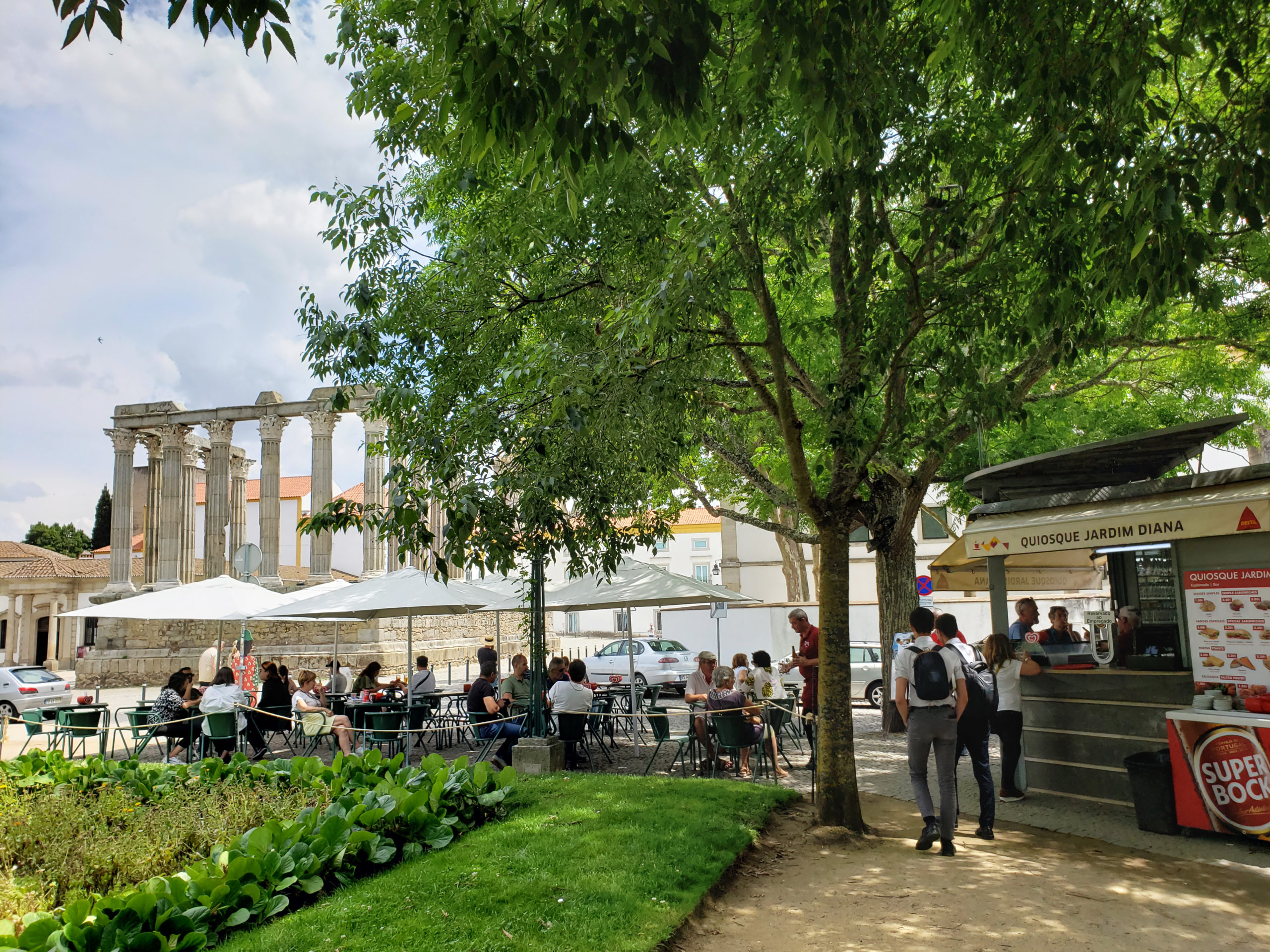
Cathedral of Évora
Noted as the largest cathedral in Portugal, the imposing facade and vaulted ceilings adorned with graceful arches within Sé de Évora, or simply referred to as the Cathedral of Évora are not to be missed. Grab your camera because the highlight of the Cathedral is at the top of its towers, where you can take in a breathtaking view of the serene beauty of Évora and the rolling Alentejo countryside, as well as the bright purple Jacarunda trees that dot the surrounding area below. The Roman Catholic Cathedral was built starting in 1186 and was completed in 1746. The main façade of the Cathedral, built with rose granite, resembles that of Lisbon Cathedral and was even designed closely to the floor plan of Lisbon Cathedral, which had been built in the second half of the 12th century in Romanesque style.
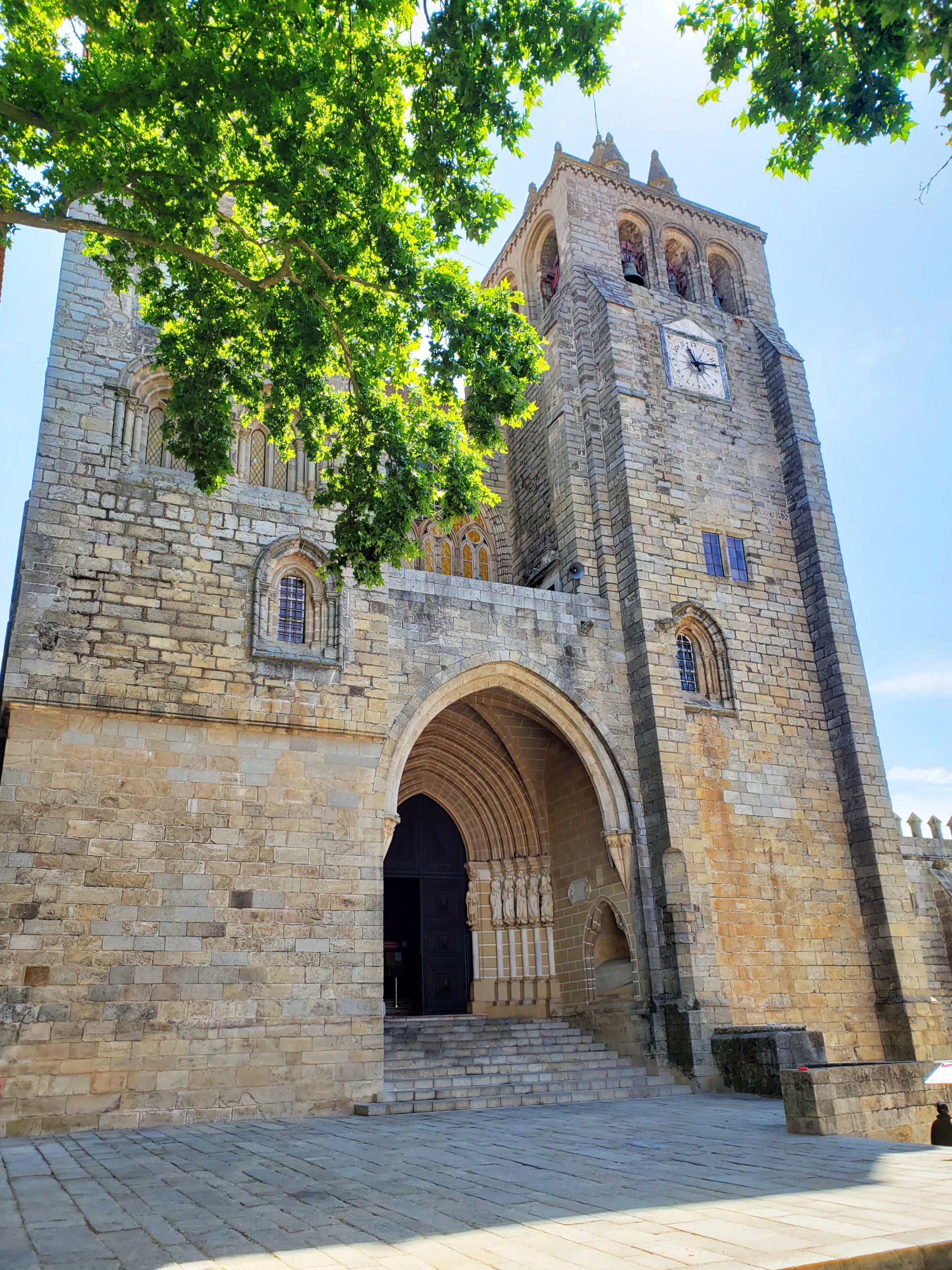


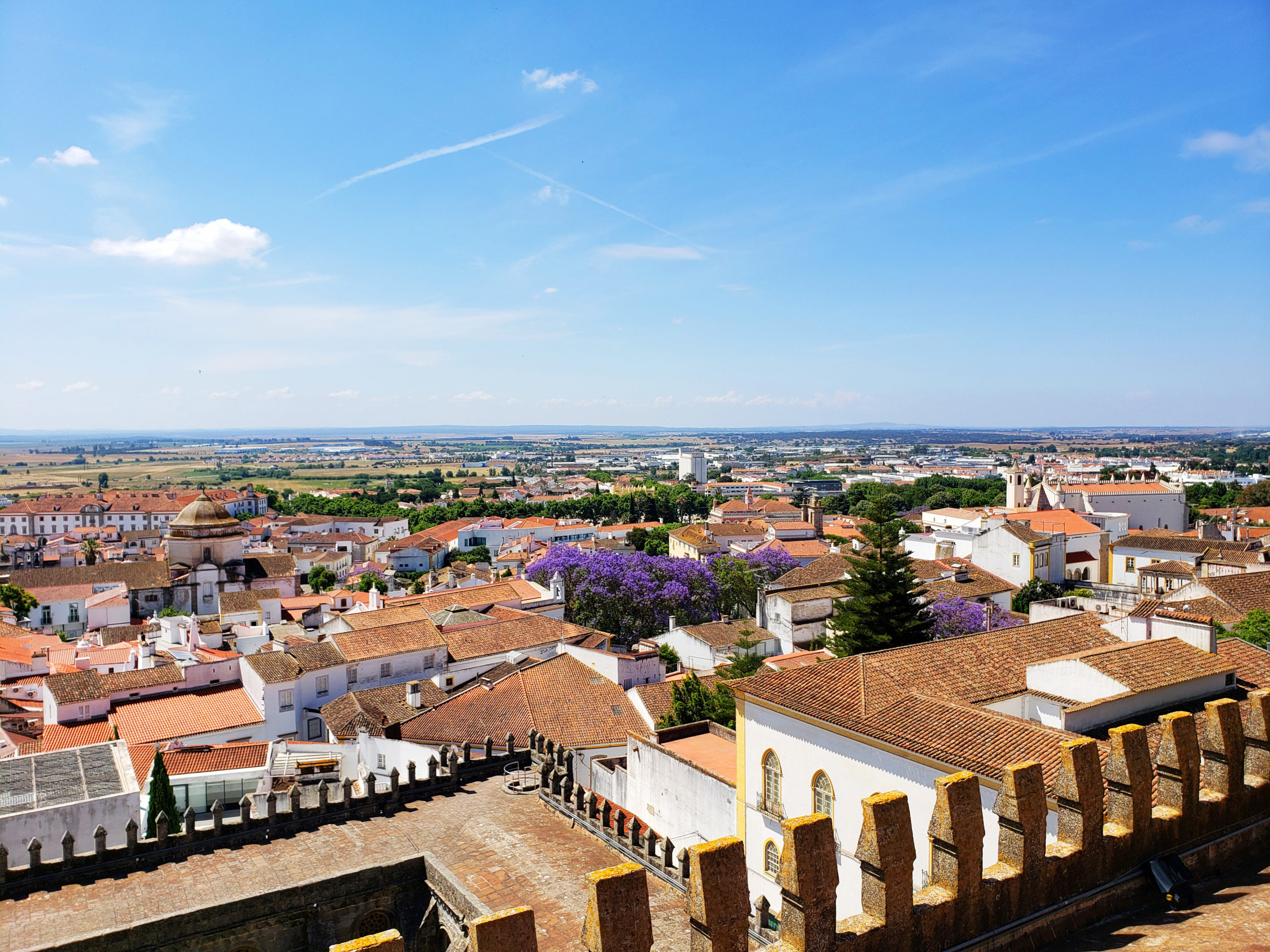



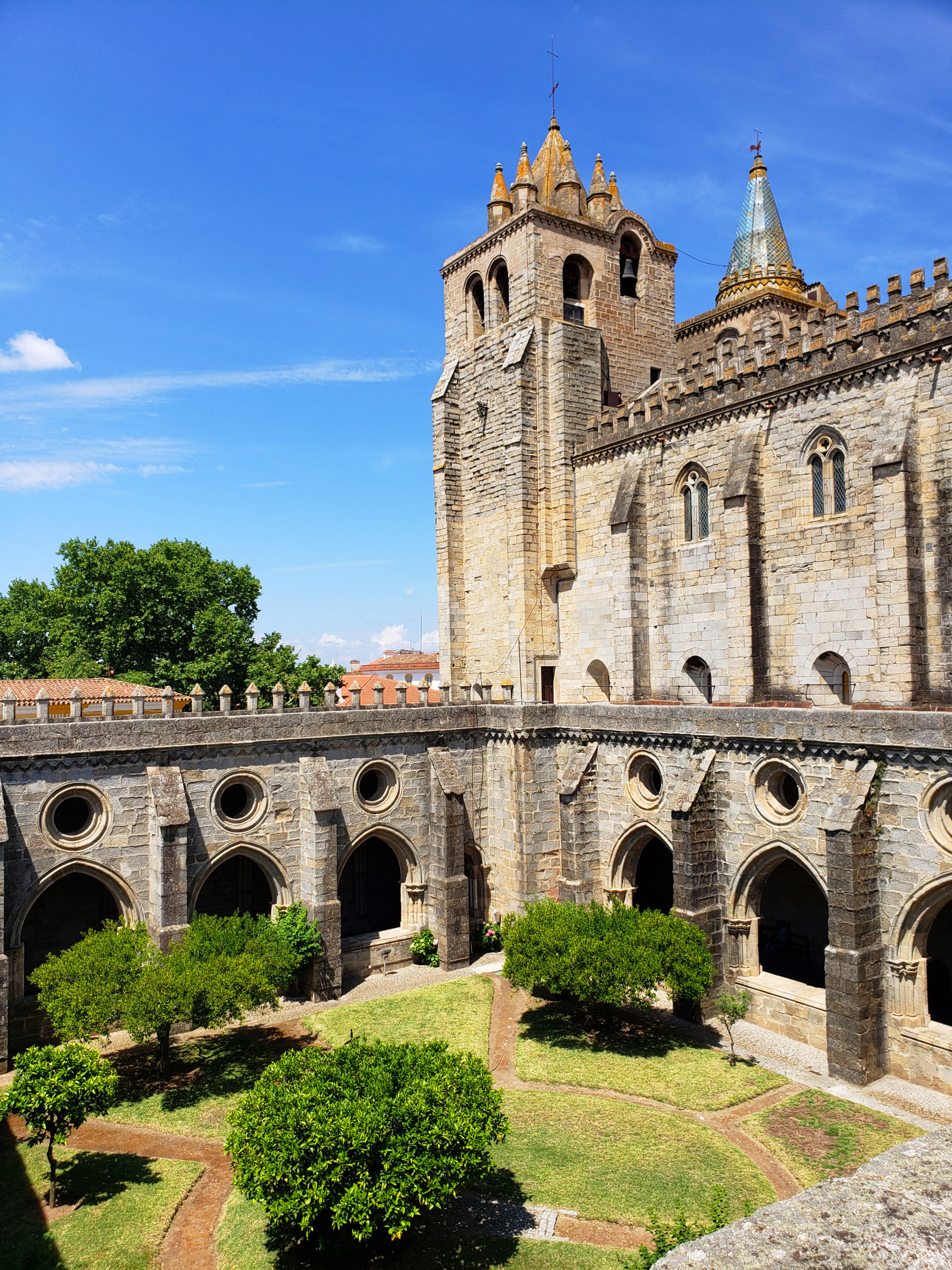

Praça do Giraldo
Filled with shops, inviting cafés and beautiful architecture, the Praça do Giraldo is a place to sit down, chill and watch the day go by. The square was named to honour Giraldo Sem Pavor (Gerald the Fearless), who was a knight that helped Portugal’s first king expel the Moors from the region in 1165. The heart of the city houses the elegant building of the Bank of Portugal, which stands on the site of the former Town Hall. Henriquina fountain is the centre of attention within the square and dates back to 1570. It has 8 spouts that represent each of the streets that lead away from the square. Choose a street and wander away to discover white painted homes with yellow painted trim, cobblestone pathways and doorways adorned with bright pink flowers, and of course, the famous Portuguese Azulejo tiles. Definitely a street photographer’s paradise.
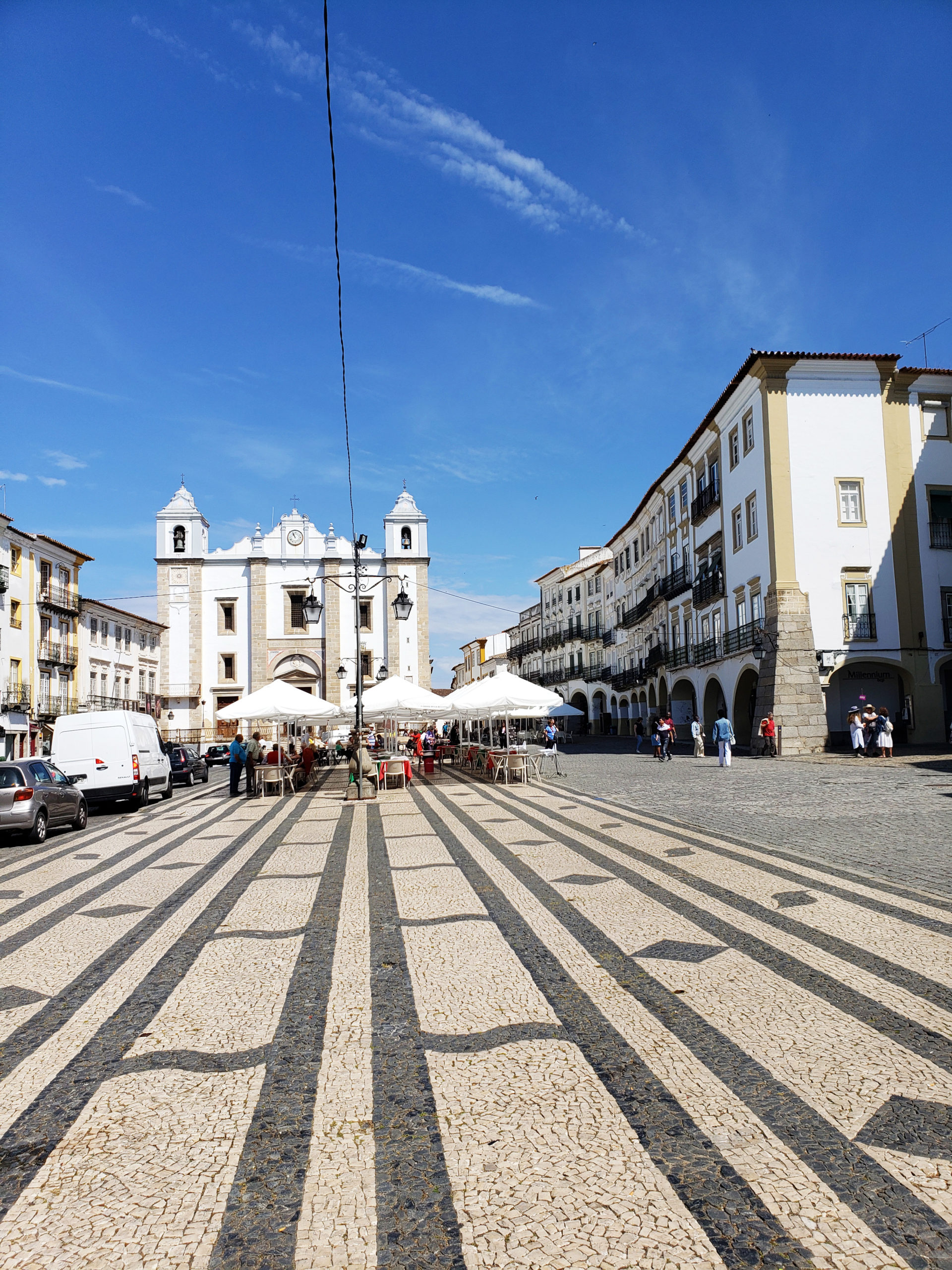
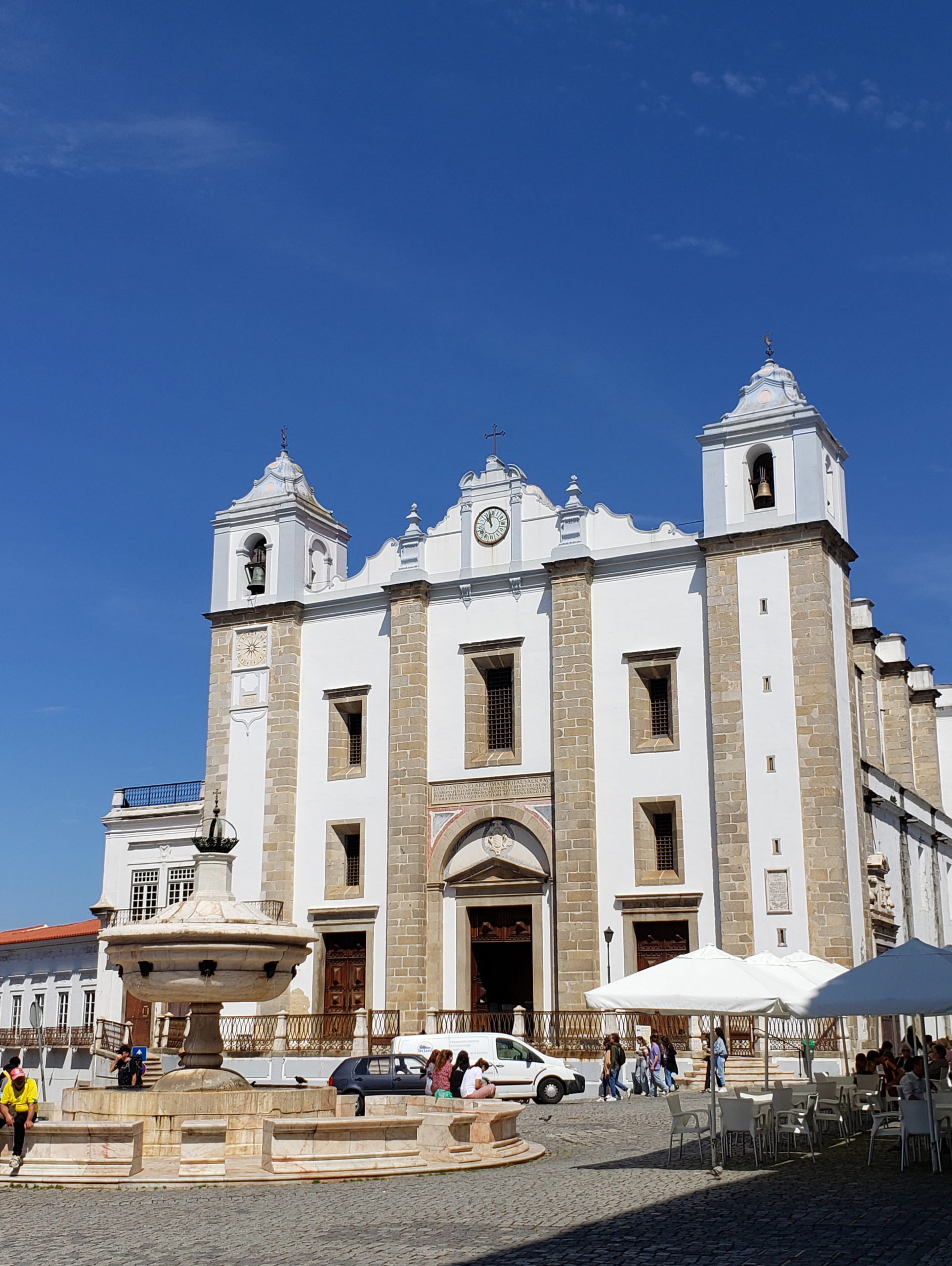

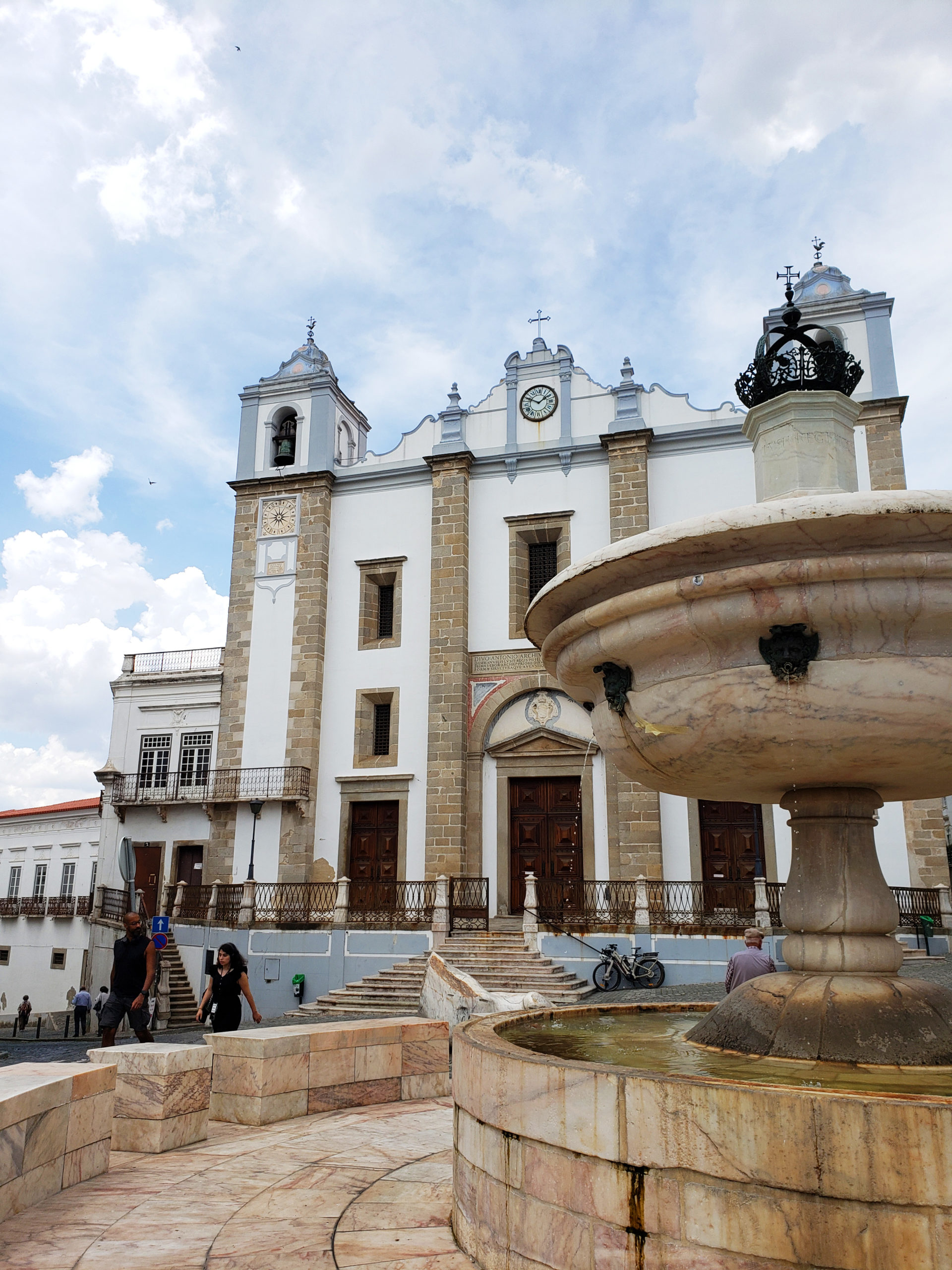
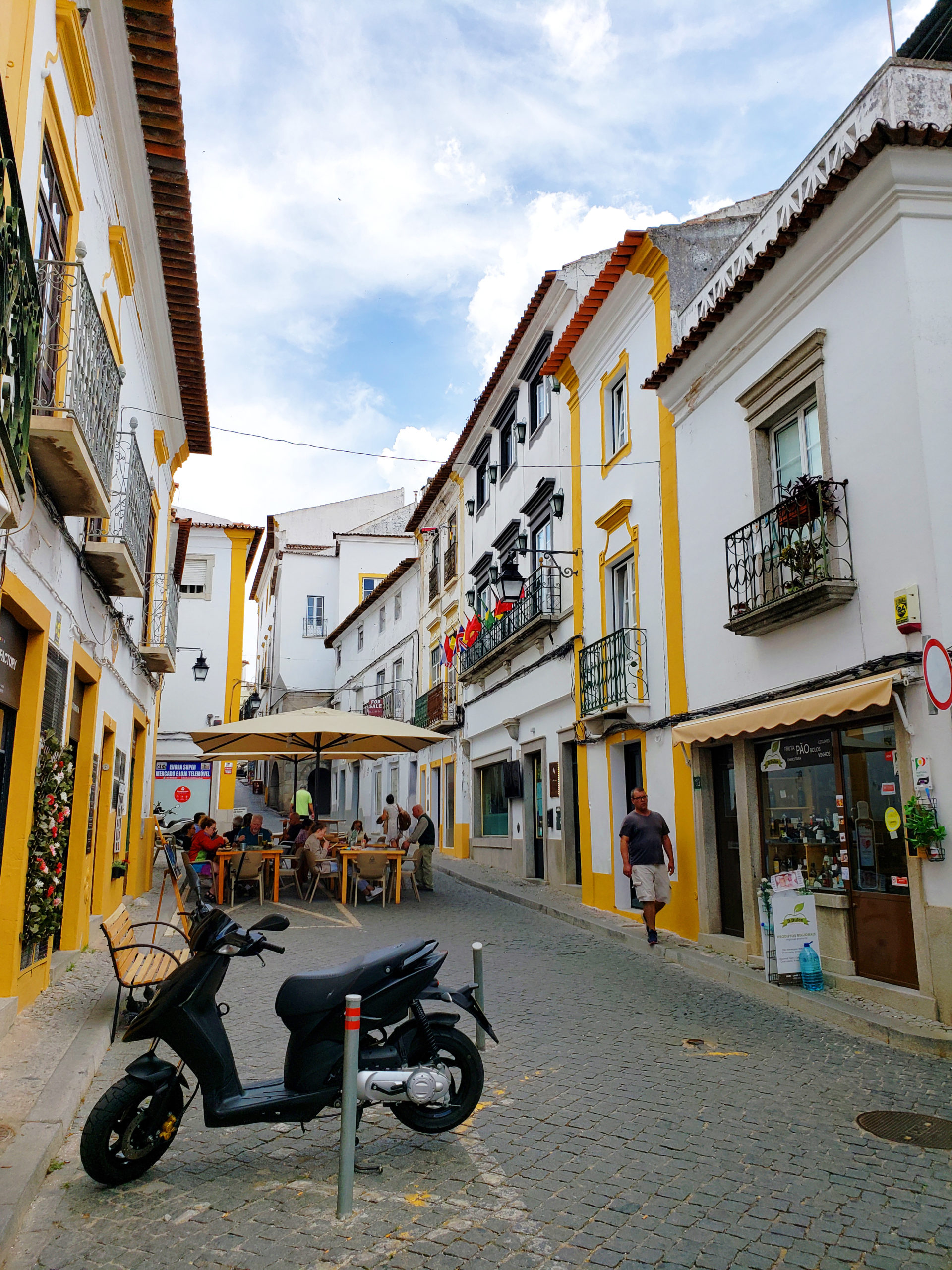
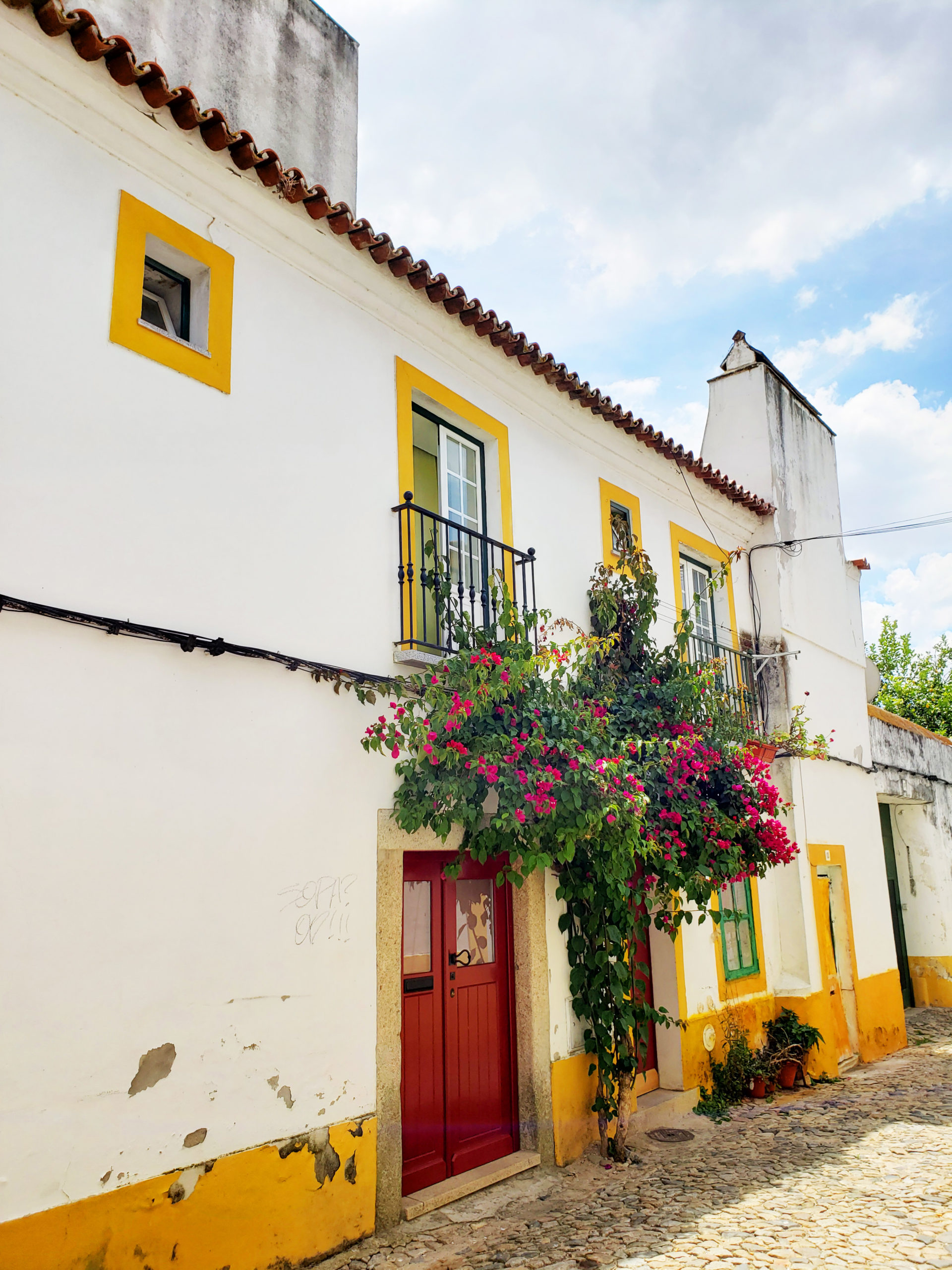
Visit The Local Shops
When I’m travelling, I absolutely love to shop as local as I can to support the community. Rua Cinco de Outubro in Évora is the place to go for local artisan shops selling everything and anything from cork purses and accessories, magnets, postcards, local alcohol, hot sauce, hand creams and cosmetics. I even sampled a shot of Ginjinha served up in an edible chocolate cup. Deeeelicious!!
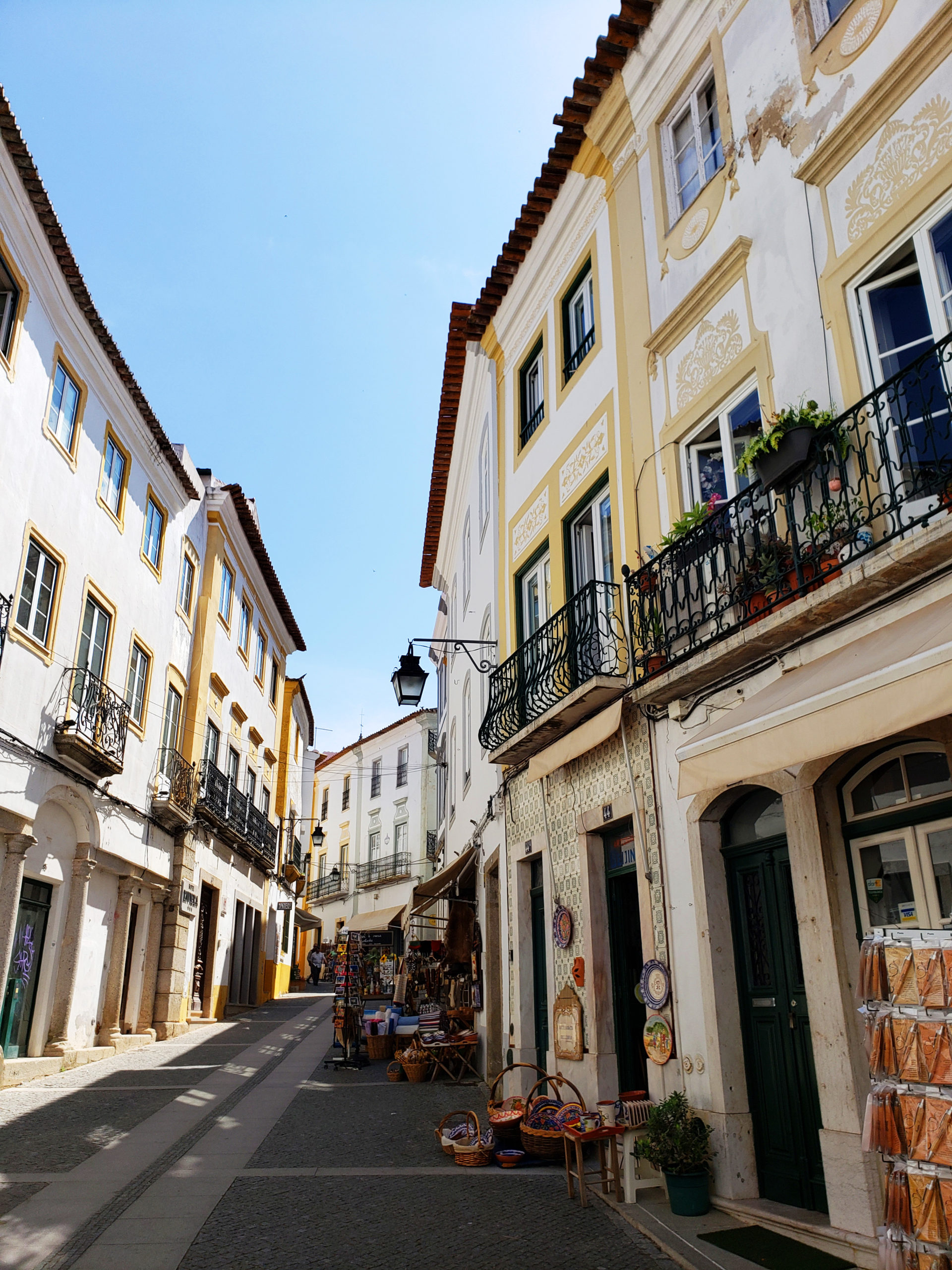

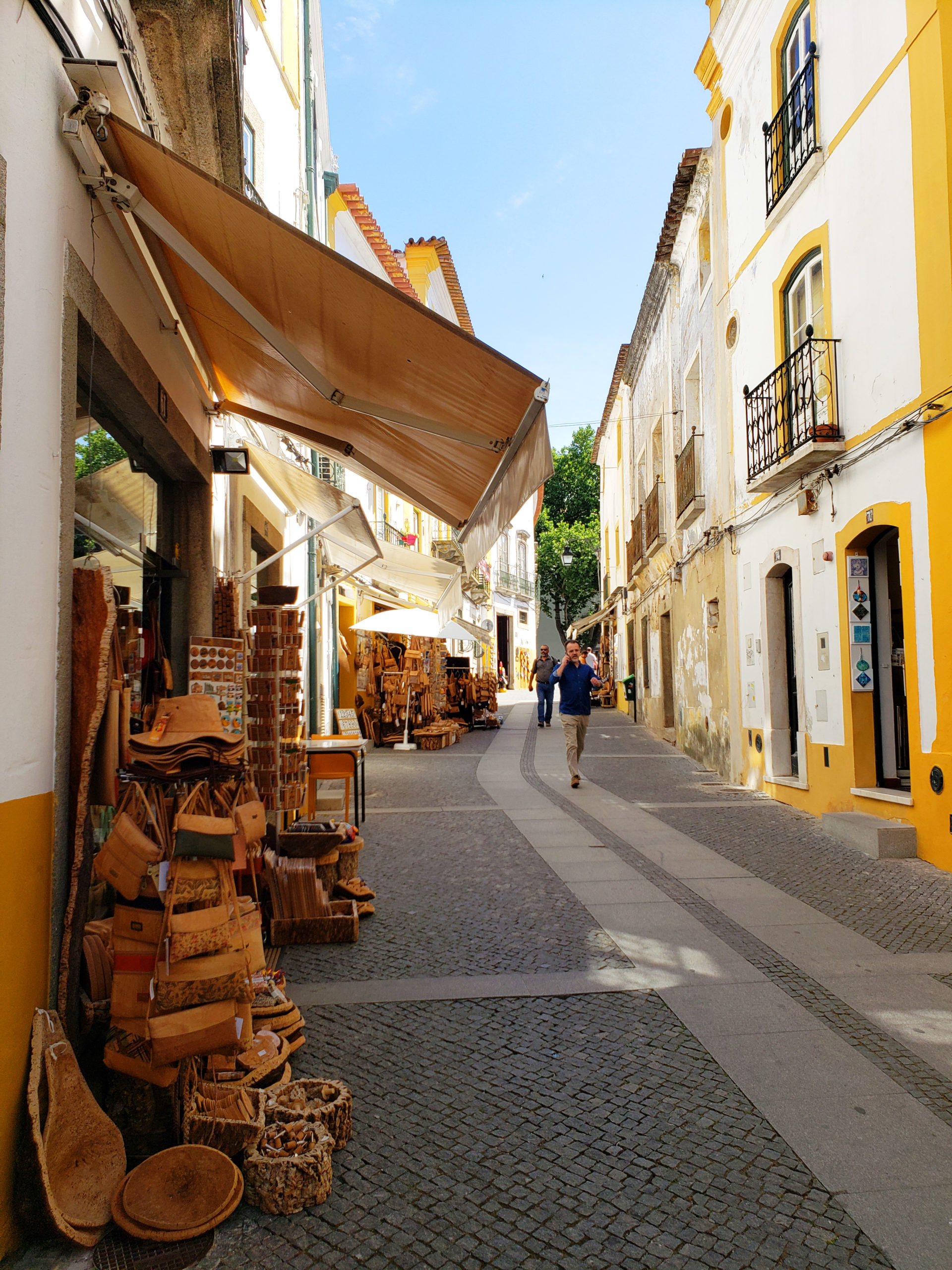
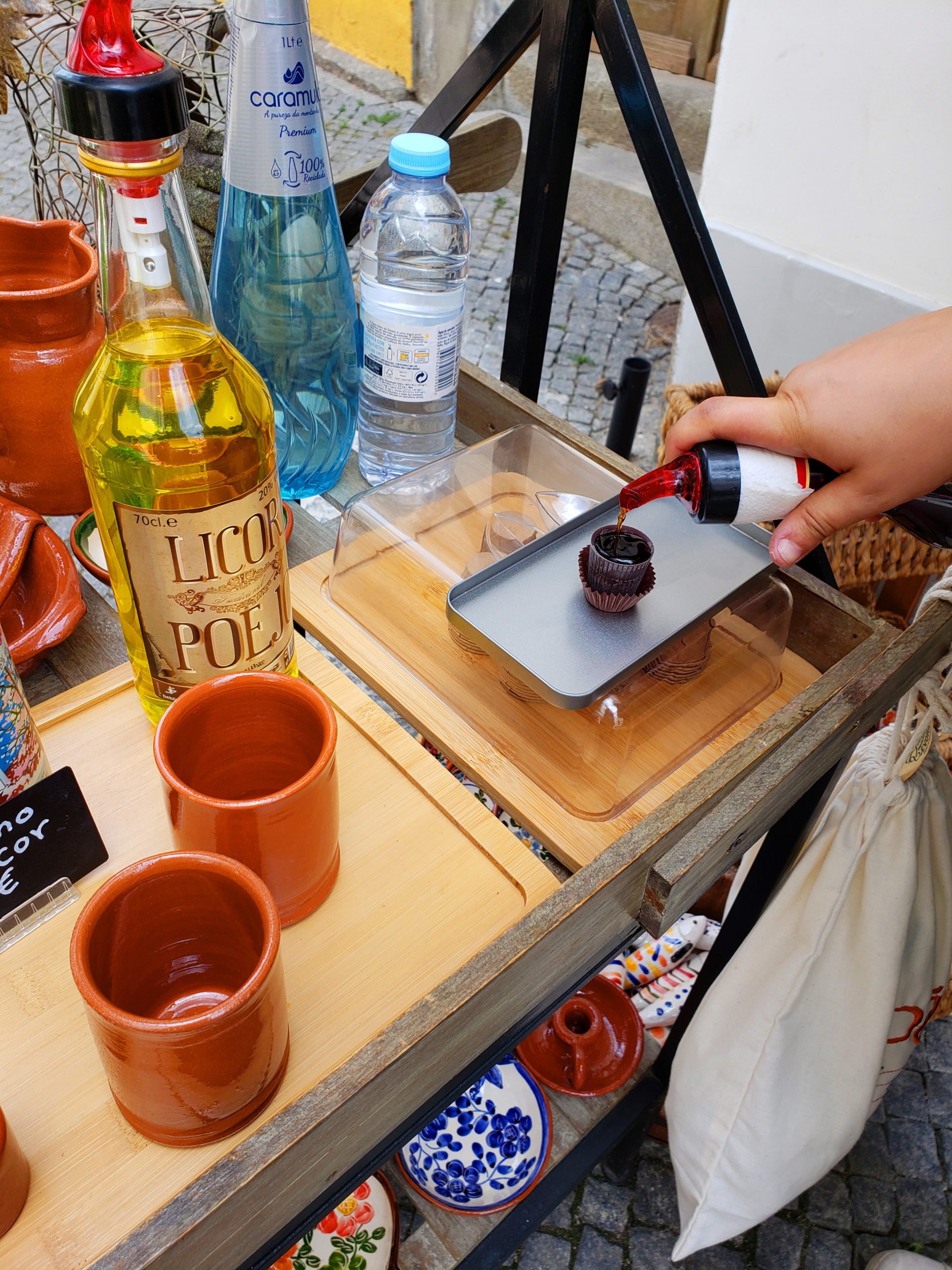
Simple Yet Delicious Food
Portuguese food is simple and delicious. There is nothing complicated about it and with just a few simple spices, the food is always bangin’! During my time in Évora, I stopped for lunch at a little place on the square called Repas, which is located adjacent to the Church of São Francisco. I had a gorgeous salmon fillet with some veggies and a beer. Like I said, simple and delicious. After walking around a bit more, I went and stopped for a coffee to soak in my remaining moments before walking back to the train station.
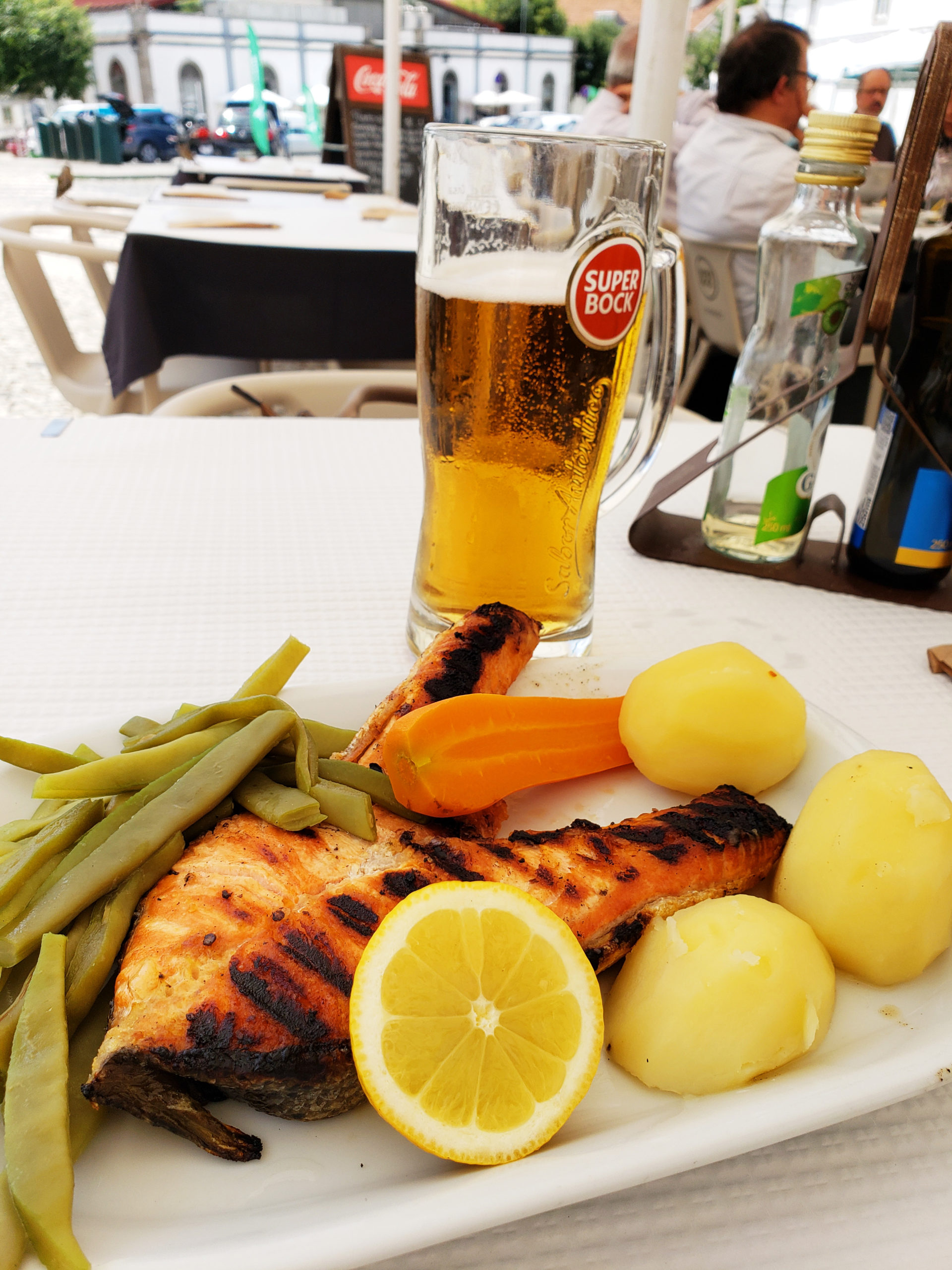

Read more: How To Find Great Places To Eat While Travelling
Make sure to get out of Lisbon and hop on a bus, or train and take a day trip to Évora. You will not be disappointed. Have any of you guys heard, or been to Évora? If you have, what drew you to visit? Let me know in the comments below! xo
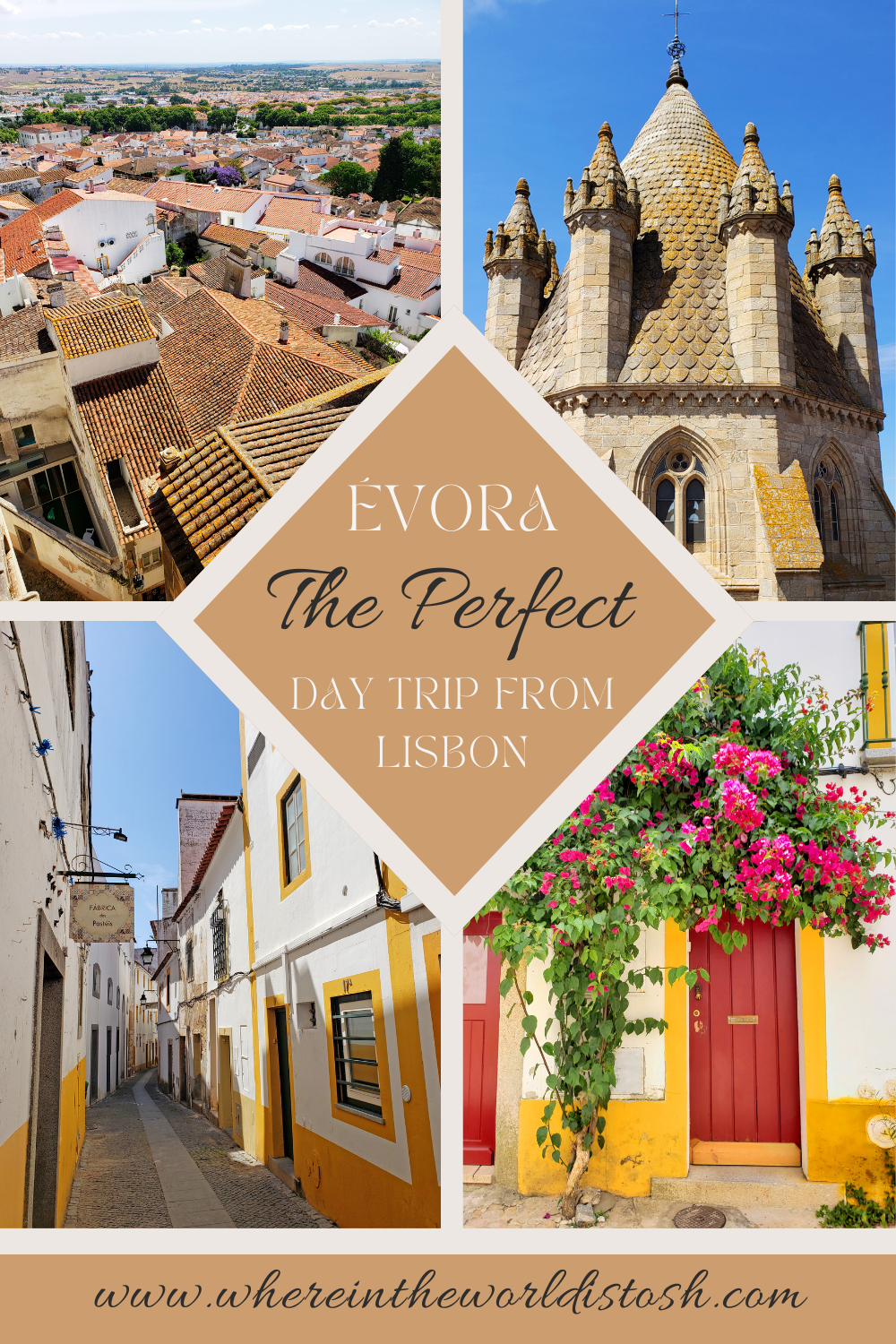
Let's get social!

